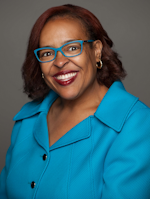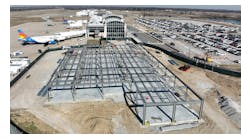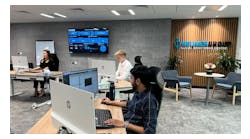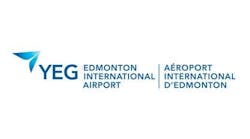In the past 10 years, more airports have added social media to their communications, marketing and outreach efforts. Balancing myriad available platforms along with the staff to handle them is being done in different ways, as illustrated by three airports across the country.
Miami International Airport (MIA) and Raleigh-Durham International Airport (RDU) are among the few that have verified Twitter accounts, symbolized by a blue checkmark by their handles. “Back when we got it, it was a great social media mystery on how to get the checkmark. The sentiment was you couldn’t ask for it; Twitter just gave it to you,” said Dickie Davis, director of public and customer relations. “Airport accounts need to be authenticated so no one can imitate you and cause problems. That is especially critical during emergencies.”
RDU applied for Twitter verification right after the original interview for this story, said Andrew Sawyer, the airport’s corporate communications coordinator. “We went to the verification site and filled it out. It was pretty simple until we had to find three websites to verify it was our airport,” he said. “So we used our website. A local TV station used images of tweets we sent out during Hurricane Matthew in their broadcast and used them as links.” Only 48 hours later, RDU had the blue checkmark, he added.
Shashank Nigam is the is the founder and CEO of SimpliFlying, an airline marketing strategy firm that covers social media among other things. He’s also the author of a new book, “Soar,” which uses employees to discuss the branding journeys of eight airlines.
These days, passengers spend as much time in airports as they do on flights, if not longer, said Nigam. “Passengers are always looking to be connected when they’re at the airport and the first thing they do when they arrive is find Wi-Fi,” he said. “This gives airports a huge opportunity to connect with passengers in ways they couldn’t before. The airlines used to own passengers but now airports have a great opportunity to connect with them and give them value.”
Testing social media
Kristie Van Auken, vice president of communications and community affairs for Raleigh-Durham International Airport (RDU), was one of the first to embrace social media back in 2006 when she held a similar position at Ohio’s Akron-Canton Airport (CAK).
“My airport director at the time, Fred Krum, came to my office with a Newsweek magazine that had a cover that said `Are You Blogging’ and asked me what it was,” Van Auken recalled. “I didn’t know, so I signed up for a workshop on blogging, where I learned it was a way to talk with people and get away from the canned speaking that marketers used at the time.
“I thought this could be cool if customers could leave comments and we could engage with real humans, so we did it. At the time it was considered revolutionary,” Van Auken said. “The big airports thought we were crazy, saying ‘we don’t talk to customers.’ At the time, it was revolutionary.”
Because Akron-Canton was a small airport, there was nothing to lose in trying blogging and social media because there was such a low risk to entry, said Van Auken. “We started blogging and people really liked it. My airport director liked it too because it helped us collapse barriers,” she said. “Then I hired young people on my team and that’s when we looked at Facebook. They said we should have a group and wrote a white paper about it, So the airport did it.”
Next was Twitter, which the airport used for customer engagement, said Van Auken. “None of this was a hard sell inside the airport once we showed our success with blogging and Facebook,” she said.
Van Auken feels that social media caught on with many airports because it reached a tipping point. “There was a sea change after the big airports saw the success that smaller airports were having, so they couldn’t ignore it anymore because everyone was using it,” she said.
At Raleigh-Durham, social media is in the communications and community affairs departments, along with social advertising in our marketing department, said Van Auken. “Andrew [Sawyer] is our lead on social media content generation. We also have a graphics coordinator and communications coordinator who step in and help with social as needed.”
Get live updates to the community
RDU recently held a board meeting, where it voted to approve a new preferred alternative for its 40-year master plan, that was live-tweeted by Sawyer. “It was literally a play-by-play of the meeting,” said Van Auken.
The airport is in the middle of a wholesale refresh on the concessions in Terminal 2, said Sawyer. Two new stores recently opened and the airport used Facebook Live and Instagram Stories to publicize the events.
“We did a Facebook Live with our concessions team at Licked, a new candy store and we did an Instagram Story on the new store Travelab store that sells travel accessories,” said Sawyer.
Raleigh-Durham uses Twitter to focus on breaking and timely news, said Sawyer. “For example, we had a page on our website with the latest information when Hurricane Matthew hit, and then we posted the link regularly on Twitter,” he said. “The media and customers looked to that to see how flights were affected and we got more than 30,000 hits during that time. It was a good way for us not to have to answer the same questions over and over again.”
Raleigh-Durham posts on Twitter every day, while Facebook and Instagram get content once or twice a week, said Sawyer. “We have a LinkedIn account that we use to reach out to the business community and we have the RDUBlog.com that we use to supplement our press releases in a more relaxed way.”
At MIA, social media falls under the the purvey of Davis, who leads the public relations and digital marketing department. “We also work very closely with our communications department. But we wanted to hone in on this specialty and give it attention,” she said. “Communications is so busy dealing with the media and speeches for executives, it only made sense to do this.”
Miami International has 13 staffers in the public relations and digital marketing department, said Davis. “But we don’t just do social media. We also handle all creative services. We’re like a PR firm, so we have writers, graphic designers, videographers and photographers,” she said. “We have a team that manages the airport’s website, generating and posting content. We also work with a vendor to develop the airport’s mobile app.”
Davis’s team also handles customer service. “We get lots of letters, emails and walk-ups that need to be responded to,” she said. “We even control all digital displays at the airport. We have a 75 foot long, eight feet high LED sign called Big Bertha. It was originally supposed to be a welcome sign, but we now use it to post PR messages like new routes or informational posts like the inflight ban on Samsung Galaxy 7 smartphones.”
The airport is currently on Facebook, Twitter, Instagram, LinkedIn and YouTube, said Davis. “Our accounts have been growing exponentially. I like the numbers, but it’s not all about the numbers. It’s about about how you the platforms,” she said. “Twitter for us is such an amazing communications tool. It allows us to serve, educate and entertain our followers.”
Like RDU, Twitter became an invaluable tool when Hurricane Matthew hit, said Davis. “It was our main method of communications to travelers and the media,” she said. “Our account grew by 13 percent during the few days of the storm. We had everyone from meteorologists to moms were tweeting us to check in with weather updates.”
Build the Right Oversight
Davis’s team is on Twitter responding to followers multiple times a day in real time, said Davis. “We post on Facebook several times a week and Instagram once or twice a day. For LinkedIn, we post all the press releases that are relevant to businesses,” she said.
Mineta-San Jose International Airport (SJC) bills it as the official airport of Silicon Valley, home to the top social media platforms. The airport’s social media function is in the business development division, which includes air service development, marketing, customer service and public relations/public affairs.
“We have a staff of two or three people that help with social media responses,” said Rosemary Barnes, the airport’s public information manager. “[Digital communications manager] Angela [Ondo] doesn’t have dedicated staff, but has people who promote our channels as things come up.”
The airport is on Facebook, Twitter and has a small presence on YouTube, said Ondo. “We’re getting into Instagram because of its popularity. We experimented with Pinterest, but we let it go because the maintenance it required and it wasn’t one of the top channels,” she said. “We also have photos on Flickr and we’re on LinkedIn to target businesses and to showcase our air service development team.”
The airport tries to post fresh content everyday, said Barnes. “But we also want to remain relevant, so if there’s nothing to share, we won’t post,” she said. “We don’t always share the same things on Facebook and Twitter. On Facebook, we’re there to entertain and engage, so there’s no official business news there.”
Business news is posted via Twitter, said Barnes. “That’s where the media follows us and we give out snapshots of information,” she said. “We also have a monthly newsletter, so we pull individual stories out and sent them over social media to share during the month.”
SimpliFlying’s Nigam has advice for airports that want to step up their social media efforts. “First, you need to determine what you want to achieve out of social media. Just doing random posts is a trap that most airports fall into,” he said. “Second, do you have the resources you need to do it effectively?”
Once those questions have been answered, airports must be laser focused on that reason. “And if airports want the Holy Grail, they can go the distance and truly engage with their customers by developing brand affinity. There’s so much they can do in that area,” he said.
All three airport representatives agree that social media has become an important part of their communications and marketing efforts. “It’s essential,” said RDU’s Van Auken. “It’s part of everything we do in our plans now. We won’t move forward with anything without including social media in it.”
People want immediacy, said Miami’s Davis. “They want to know what’s happening right now and you can only do that on social media,” she said.
Miami has tapped into its friendships with local celebrities like NBA player Dwyane Wade and singer Gloria Estafan to promote the airport, said Davis. “You would have to pay a lot of money for these endorsements and we see it as an investment in what we’re trying to do,” she said. “We have an authentic brand, and they see the value of that so they partner with us.”
Mineta San Jose started on social media in spring 2011, said Ondo. “There’s lot more we could be doing, but I think we’re doing a good job sharing news on our channels and through boosted posts. But there’s definitely room to grow in that area,” she said.
The airport needs to be on social media and engaged in it, said Barnes. “We’re Silicon Valley’s airport and the region is looking to us to learn about our airport and get real-time information,” she said. “We do a good job, given our limited resources.”






